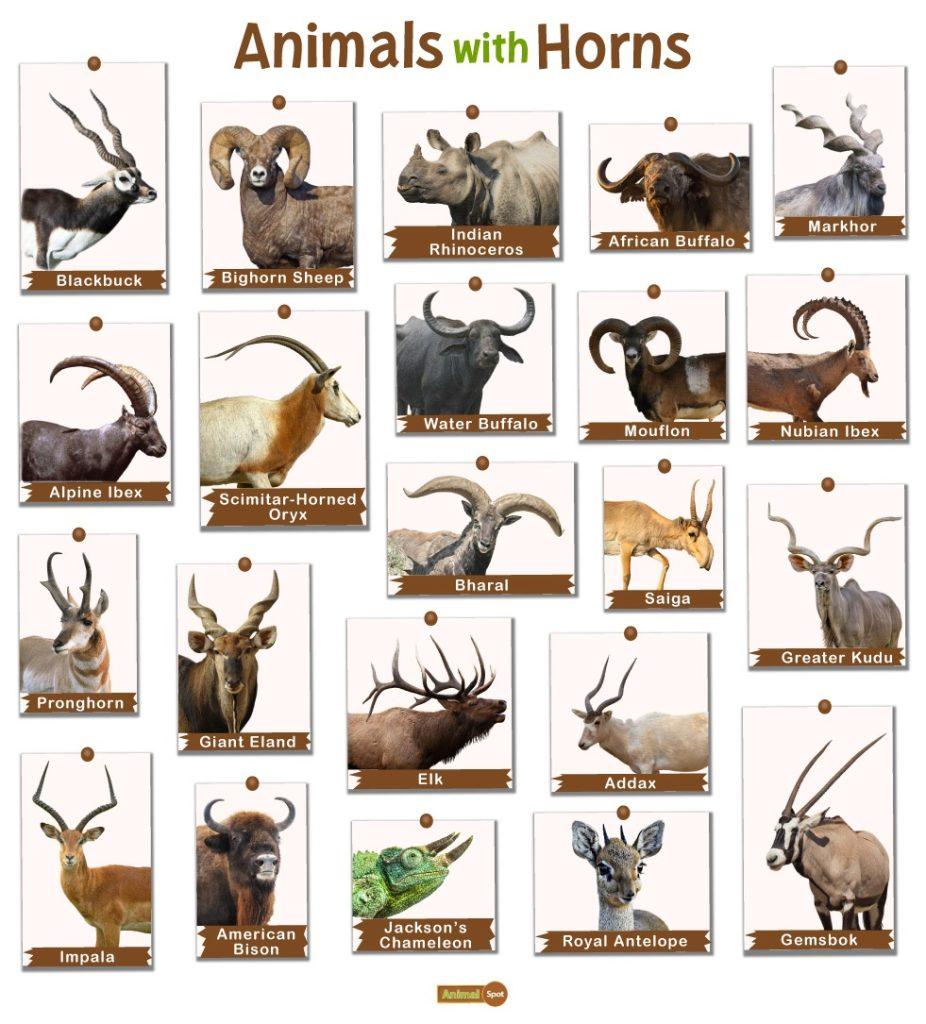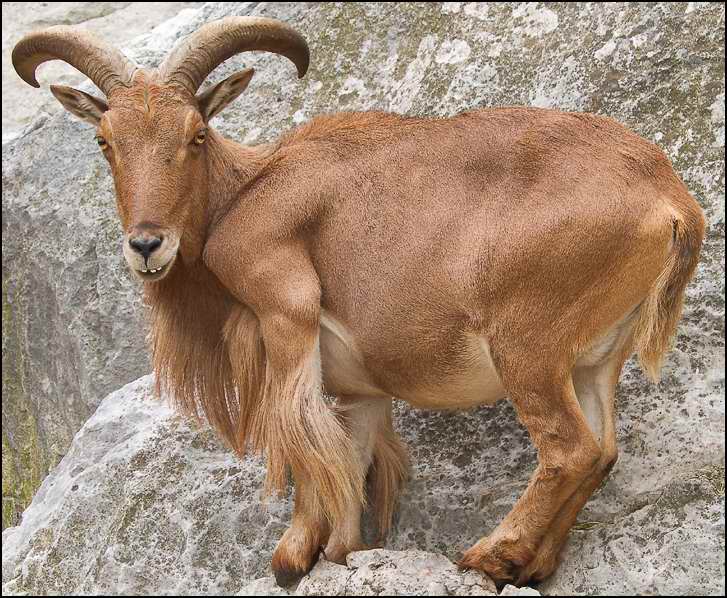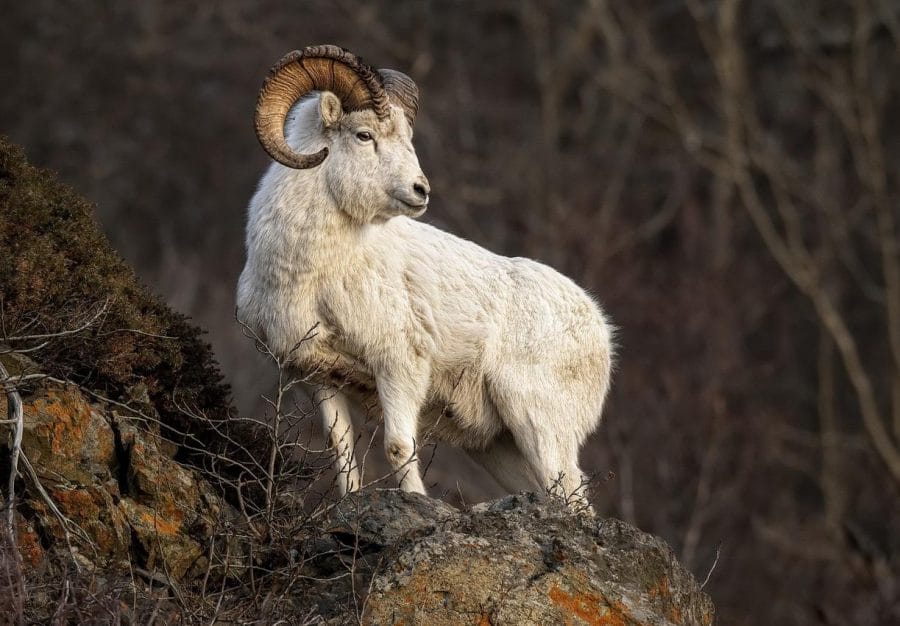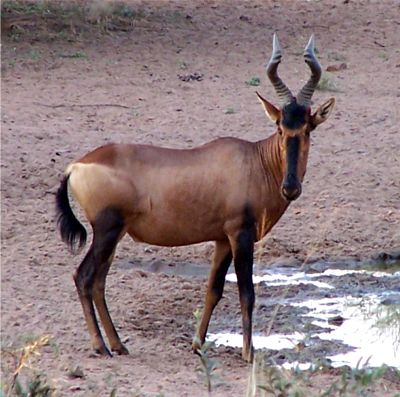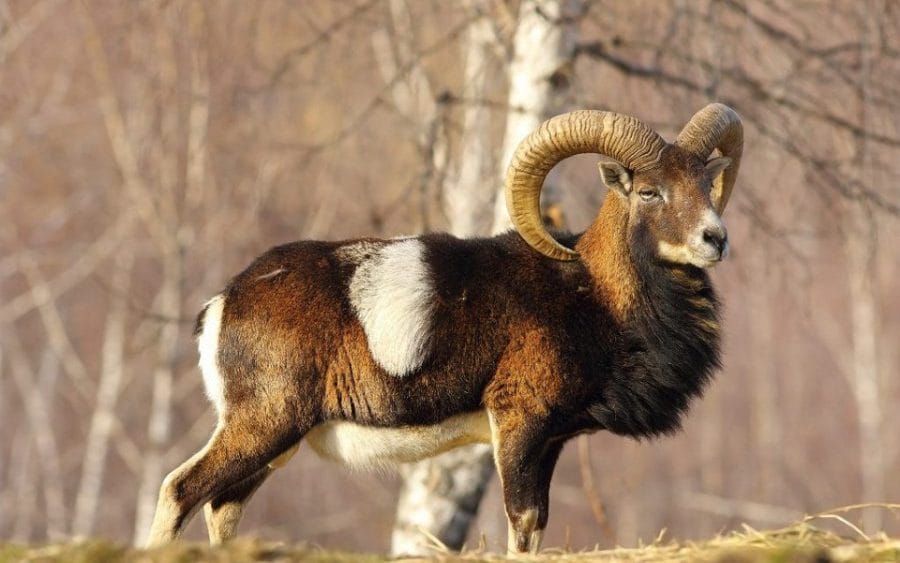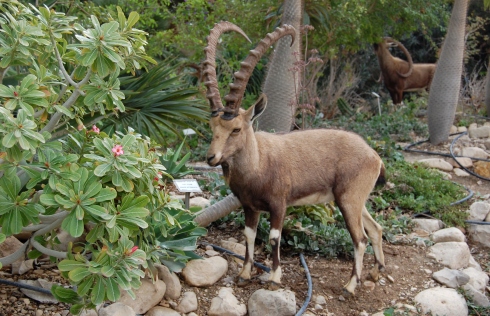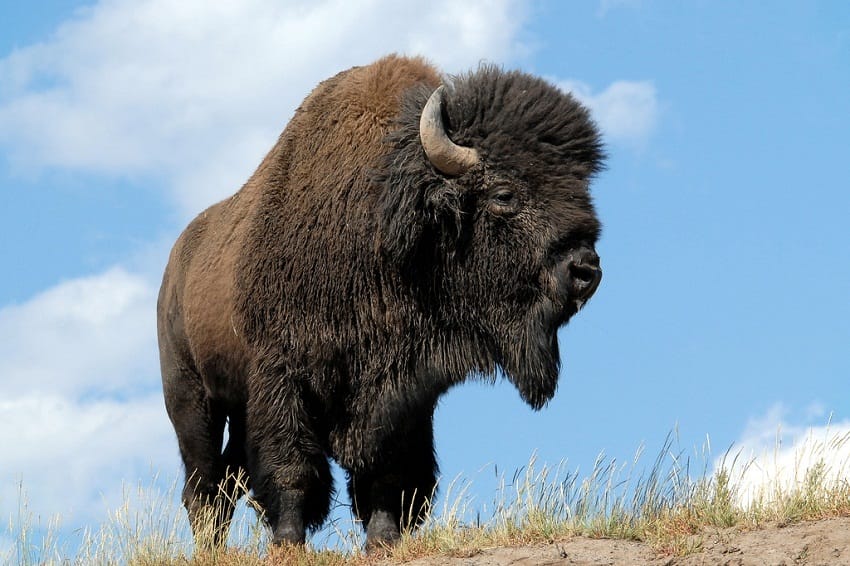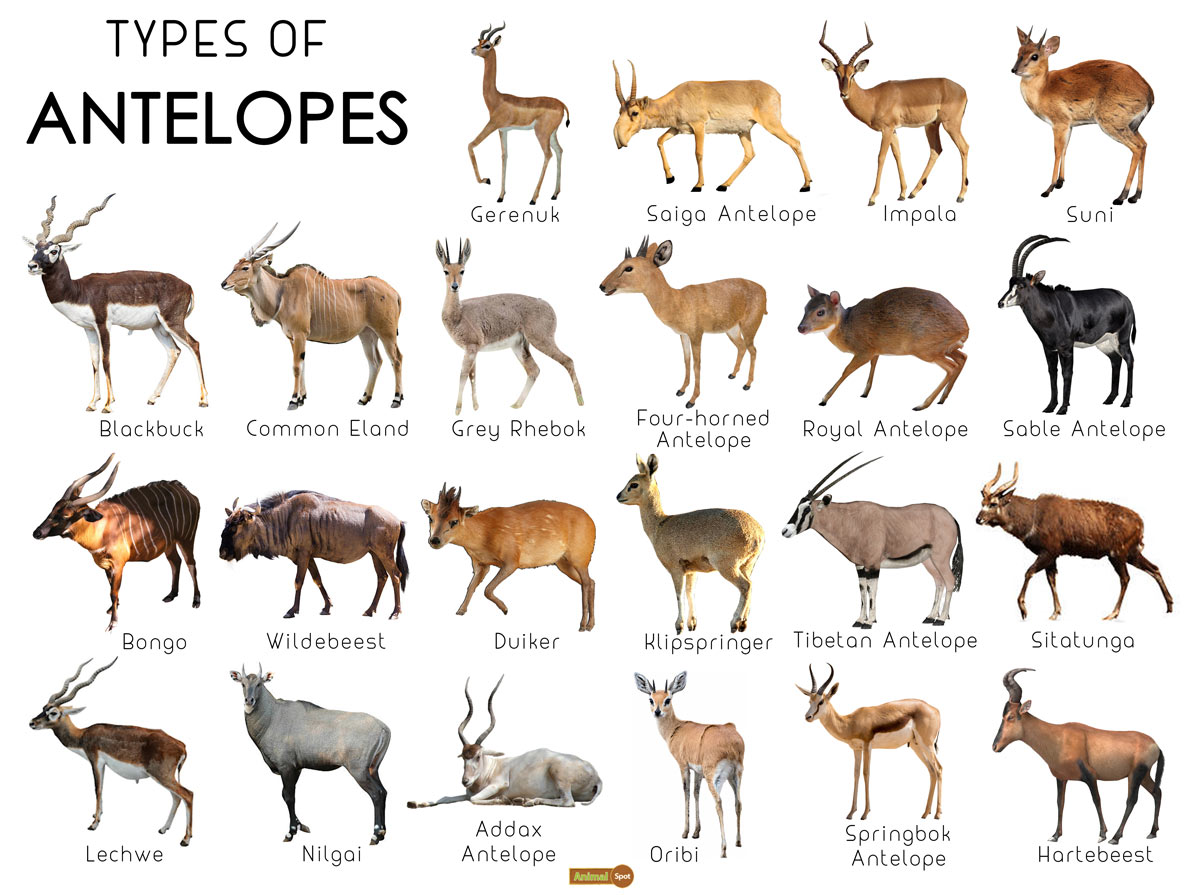Horns are hard, pointed, permanent structures protruding from the head of most hoofed animals. It comprises a central core of bones enveloped by a layer of keratin and other proteins. The horns in animals start growing right after birth, with the growth continuing throughout life. Horns are present in both sexes in the bigger species, while in smaller animals, they might remain absent in the females. However, the males have bigger and sturdier horns than their female counterparts, which they use while fighting other males in their clan to establish dominance and attract females.
List of Animals with Horns
Different Types of Horns in Animals
Bovine Horns –The members of the Bovidae family, including sheep, antelopes, goats, and cows, are the ones that have true horns. Their horns are curled, curved, or spiral but never branch.
Rhino Horns –The horns in rhinos don’t have the bony core seen in true horns and are wholly made of keratin woven tightly. Both sexes have horns that remain permanent.
Giraffe Horns – Most giraffes have three horn-like bony projections on their head, known as ossicones, that remain covered in a layer of hair and skin. Like the bovine horns, the giraffe horns also come in pairs, are permanent, and do not form branches.
Horns of Pronghorns – Pronghorns are related to antelope and goats. It is neither a true horn nor an antler but rather a mix of the two. The horns, comprising keratin, like bovine horns, branch into two prongs. However, they shed annually like antlers and regrow.
Horns vs. Antlers
Horns are bony, unbranched projections of keratin lying in front of the animal’s skull.
Antlers contain just bones and not keratin. They have branched structures located in the frontal of the animal’s skull, just like horns.
Horns remain permanent while antlers shed each year, with new antlers growing.
FAQs
Q. Which African animals have horns?Scimitar oryx, spiral-horned antelopes, horned desert viper, Jackson’s chameleon
Q. Which animals have long horns?Markhor, greater kudu, scimitar oryx, Alpine ibex; the Asian water buffalo has the longest horns
Q. Which animals have one horn?Indian Rhinoceros (Great One-honed Rhinoceros)
Q. Which sea animals have horns?Narwhal, short-nosed unicornfish
Q. Which animals have curled or spiral horns?Greater kudu, giant eland
Q. Which are the small horned animals?Royal antelope, known to have the smallest horns
Q. Which are the deer-like animals with horns?Markhor, saiga, bharal, mouflon, blackbuck
Q. Which animals have straight horns?Scimitar-horned oryx; has long, slender, and straight horns
Q. Which mountain animals have horns?Bighorn sheep, saiga antelope, Alpine ibex,
Giraffes, though they don’t have horns but horn-like projects called ossicones
Q. Are tusks and horns the same?Tusks are neither enamels nor horns but elongated ivory teeth.

